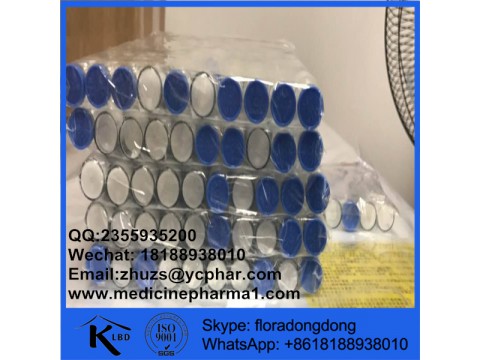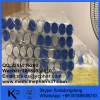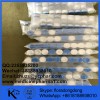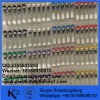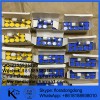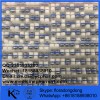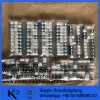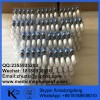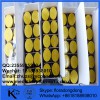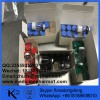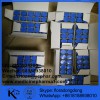HGH fragment 176-191( Aod9604)
Sequence: Tyr-Leu-Arg-Ile-Val-Gln-Cys-Arg-Ser-Val-Glu-Gly-Ser-Cys-Gly-Phe
Molecular formula: C78H123N23O23S2
MW: 1815.08152
CAS number: 221231-10-3
Synonyms: HGH Fragment 177-191, AOD-9604
Appearance: White Powder
Purity: 98%
Grade: Pharmaceutical Grade
Storage: Closed, below 2 ~ 8 C preservation
Delivery time: Within 18 hours upon receipt of payment
Delivery: EMS, DHL, TNT, FedEx, UPS
Usage: AOD9604 actually acts on the reduction of excessive adipose tissues such as those in the
abdominal area, increase in muscle mass, and enhances the lipid content of the body.
Description:
HGH fragment 176-191 is an analog of the growth hormone-releasing factor (GRF) which signals the effects of growth hormone. It is a 15-mer peptide residue of the
C-terminus of HGH to which tyrosine is added at the N-terminal end. This synthetically produced hormone
is very common to weightlifters and bodybuilders because of a number of physical benefits. Studies claimed
that it actually acts on the reduction of excessive adipose tissues such as those in the abdominal area,
increase in muscle mass, and enhances the lipid content of the body.
These segments of the synthetic peptide AOD9604 have been researched for their in vivo effects in
laboratory mice musculus. Results have shown that AOD9604 have resulted to a short-period increase in blood glucose and a more sustained increase in plasma insulin, together with other
fragments such as 172-191, 177-191 and 178-191. In addition, the researchers have suggested that
functionality of the peptide depends not only in the informational sequence but should also have the
correct physical configuration (Ng and Borstein 1978). Also, AOD9604, being a region of high accessibility
to proteases and also rich in proline, have been demonstrated to affect the conformational change in the
cytoplasmic domain of the band 3 of erythrocyte membrane protein by serving as the hinge for the pivoting
of the two subdomains. This then suggest that such residue is significant in conformational changes be
serving as sites for peripheral protein binding in some body cells (Low et al. 1984).
Application:
HGH fragment 176-191 is an analog of the growth hormone-releasing factor (GRF) which signals the effects of growth hormone. It is a 15-mer peptide residue of the
C-terminus of HGH to which tyrosine is added at the N-terminal end. This synthetically produced hormone
is very common to weightlifters and bodybuilders because of a number of physical benefits. Studies
claimed that it actually acts on the reduction of excessive adipose tissues such as those in the abdominal
area, increase in muscle mass, and enhances the lipid content of the body.
Contact info
QQ:2355935200
Skype: floradongdong
WhatsApp: +8618188938010
Wechat: 18188938010
Email:zhuzs@ycphar.com

